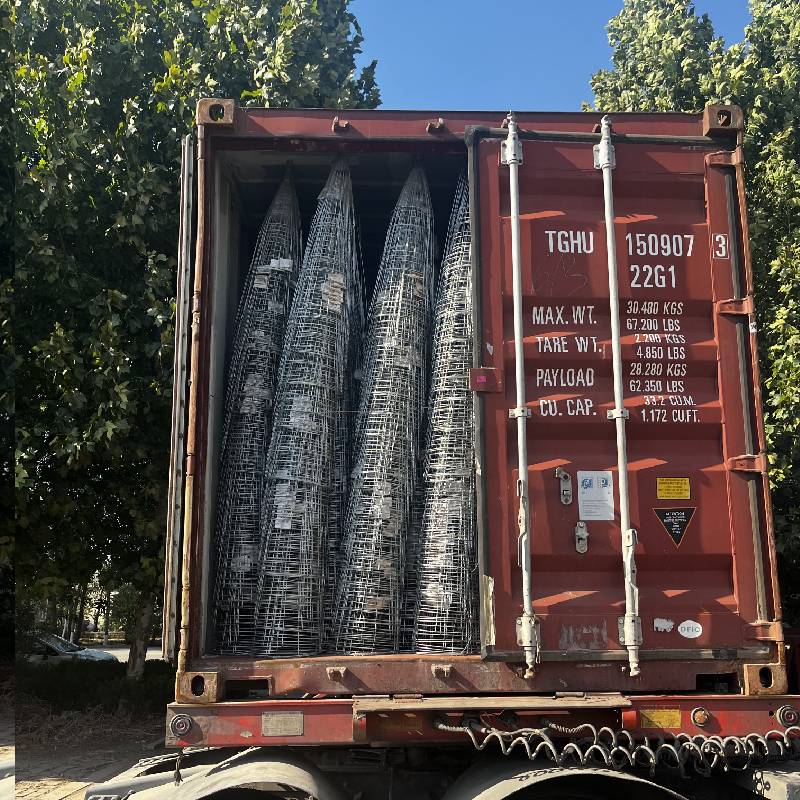
- Mobile Phone
- +8613931874955
- sales@cntcmetal.com
Reinforced Concrete Mesh for Enhanced Strength and Durability in Construction
Understanding Concrete Reinforcing Mesh
Concrete is one of the most widely used construction materials in the world. Its strength, durability, and ability to mold into a variety of shapes make it ideal for everything from buildings to bridges. However, concrete is inherently weak in tension. To enhance its tensile strength, reinforcing materials are essential, and one of the most effective solutions is the use of concrete reinforcing mesh.
What is Concrete Reinforcing Mesh?
Concrete reinforcing mesh, often referred to as rebar mesh or wire mesh, consists of a series of intertwined steel rods or wires. The mesh is typically manufactured in sheets or rolls and is placed within the pour of concrete to better distribute stresses and avoid cracking. This system helps to improve the strength and durability of concrete structures significantly.
Benefits of Using Reinforcing Mesh
1. Improved Tensile Strength The primary purpose of reinforcing mesh is to provide tensile strength to concrete. When tension forces exceed the concrete's inherent capabilities, the mesh absorbs and redistributes these forces, preventing structural failure.
2. Reduced Cracking During the curing process, concrete is susceptible to cracking due to shrinkage and temperature changes. Reinforcing mesh helps to control cracking by holding the concrete together, which minimizes the width and occurrence of cracks.
3. Enhanced Load Distribution The mesh aids in evenly distributing loads across the concrete surface. This is particularly important in applications where heavy loads are directly applied, such as in industrial floors or highways.
4. Cost-Effectiveness While the initial investment in reinforcing mesh might seem considerable, it can lead to significant savings in repairs and maintenance over time. By preventing structural issues, reinforcing mesh can help prolong the lifespan of concrete constructions and minimize the need for costly repairs.
5. Versatility Reinforcing mesh is available in various sizes, gauges, and materials, making it suitable for a wide range of applications. Whether it's for residential foundations or large-scale commercial projects, there is a type of mesh tailored to fit specific needs.
Applications of Concrete Reinforcing Mesh
concrete reinforcing mesh

The versatility of concrete reinforcing mesh makes it suitable for many applications in construction
- Residential Foundations In home construction, reinforcing mesh is commonly used in slabs and footings to enhance strength and stability
.- Industrial Floors Heavy machinery and equipment require robust flooring solutions. Reinforcing mesh provides the tensile properties needed to withstand substantial weight and prevent cracking under stress.
- Pavements and Roadways Roads and pavements benefit from the strength enhancement provided by reinforcing mesh, which helps maintain surface integrity and reduce maintenance needs.
- Retaining Walls Reinforcing mesh is instrumental in constructing retaining walls, providing the necessary support to withstand lateral earth pressures.
- Precast Concrete Products Many precast concrete elements, such as beams and slabs, incorporate reinforcing mesh during manufacturing to improve their strength and durability.
Installation Considerations
For optimal performance, the installation of concrete reinforcing mesh requires careful planning and execution. The mesh should be placed at an appropriate depth within the concrete, away from surfaces that could lead to corrosion over time. Additionally, proper overlap and fastening of the mesh are essential to ensure continuity and effectiveness across the entire structure.
Conclusion
Concrete reinforcing mesh plays a vital role in modern construction. By improving the tensile strength, reducing cracking, and enhancing load distribution, it has become an indispensable component in the building industry. As we continue to innovate and build increasingly complex structures, the importance of effective reinforcing solutions such as concrete reinforcing mesh cannot be overstated. Its ability to ensure safety, longevity, and cost-effectiveness makes it one of the cornerstones of contemporary construction practices.
share:
-
Yard Sign Stakes: Reliable Guardians of Outdoor SignsNewsAug.04,2025
-
Wall Ties: Invisible Guardians of Building StabilityNewsAug.04,2025
-
Resilient Web: The Super Guardian Power of Concrete MeshNewsAug.04,2025
-
Masonry Accessories: A versatile assistant on building foundationsNewsAug.04,2025
-
Iron Binding Wire: the 'invisible reinforcement specialist' in the fields of architecture and industryNewsAug.04,2025
-
Dynamic Spring: The diverse functions and excellent performance of Wire Tension SpringNewsAug.04,2025
-
Your Source for Concrete Wall Ties and Masonry AccessoriesNewsJul.10,2025



















